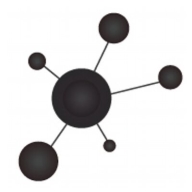

Nagios XI and Icinga are two leading network monitoring solutions. Icinga has the upper hand in adaptability and integration strengths in dynamic environments.
Features: Nagios XI offers robust monitoring capabilities, comprehensive reporting options, and an extensive plugin ecosystem. Icinga provides flexible configuration, integration with various data sources, and a modern, scalable architecture.
Room for Improvement: Nagios XI users point out the need for a more modern interface, enhanced scalability, and better ease of use. Icinga users see room for improvement in documentation clarity, initial configuration complexity, and support for onboarding.
Ease of Deployment and Customer Service: Nagios XI offers straightforward installation with strong customer support, but some users find initial setups time-consuming. Icinga's deployment is flexible but may require additional expertise. Customer service for Icinga is generally positive, although some users seek better support for initial setups.
Pricing and ROI: Nagios XI's initial setup cost is higher but justified by its comprehensive features, yielding satisfactory ROI. Icinga has a lower setup cost and delivers a compelling ROI due to its flexibility and integration capabilities.


Icinga monitors systems, network devices, infrastructure, and services, helping manage and analyze server resources. It automates ticket incidents and alerting, providing oversight of client Windows and Linux systems.
Icinga offers comprehensive monitoring of servers including CPU utilization and RAM space, facilitating automated incident management and alerting. Frequently deployed on-premises, this monitoring tool is key for managed services providers and organizations to oversee and ensure optimal performance of various environments, including applications like databases and web servers. It provides extensive features for creating custom plugins, stabilization, scalability, and high customization capabilities suitable for different infrastructure needs.
What are the key features of Icinga?Icinga implementations span multiple industries, providing essential monitoring for IT infrastructure in healthcare, finance, and education. Managed services providers utilize Icinga to maintain and monitor client systems across various environments while ensuring optimal performance and compliance. It is highly valued in these sectors for its ability to customize monitoring, improving operational efficiency and reducing downtime.
Nagios XI provides monitoring of all mission-critical infrastructure components, including applications, services, operating systems, network protocols, systems metrics, and network infrastructure. Third-party add-ons provide tools for monitoring virtually all in-house and external applications, services, and systems.
Nagios XI uses a powerful Core 4 monitoring engine that provides users with the highest levels of server monitoring performance. This high degree of performance enables nearly limitless scalability and monitoring powers.
With Nagios XI, stakeholders can check up on their infrastructure status using the role-based web interface. Sophisticated dashboards enable access to monitoring information and third-party data. Administrators can easily set up permissions so users can only access the infrastructure they are authorized to view.
Nagios XI Benefits and Features
Some of the benefits and top features of using Nagios XI include:
Reviews from Real Users
Nagios XI stands out among its competitors for a number of reasons. Several major ones are its integration options and monitoring abilities, as well as its alerting features.
David P., a senior DevOps engineer at EML Payments Ltd, writes, “We use Nagios as a network discovery tool. We use Nagios to maintain our uptime statistics and to monitor our services. It has allowed us to be much more sophisticated in our monitoring and alerting.”
An IT-OSS manager at a comms service provider notes, “Nagios XI has a custom API feature, and we can expose custom APIs for our integration. This is a great feature.”
We monitor all IT Infrastructure Monitoring reviews to prevent fraudulent reviews and keep review quality high. We do not post reviews by company employees or direct competitors. We validate each review for authenticity via cross-reference with LinkedIn, and personal follow-up with the reviewer when necessary.